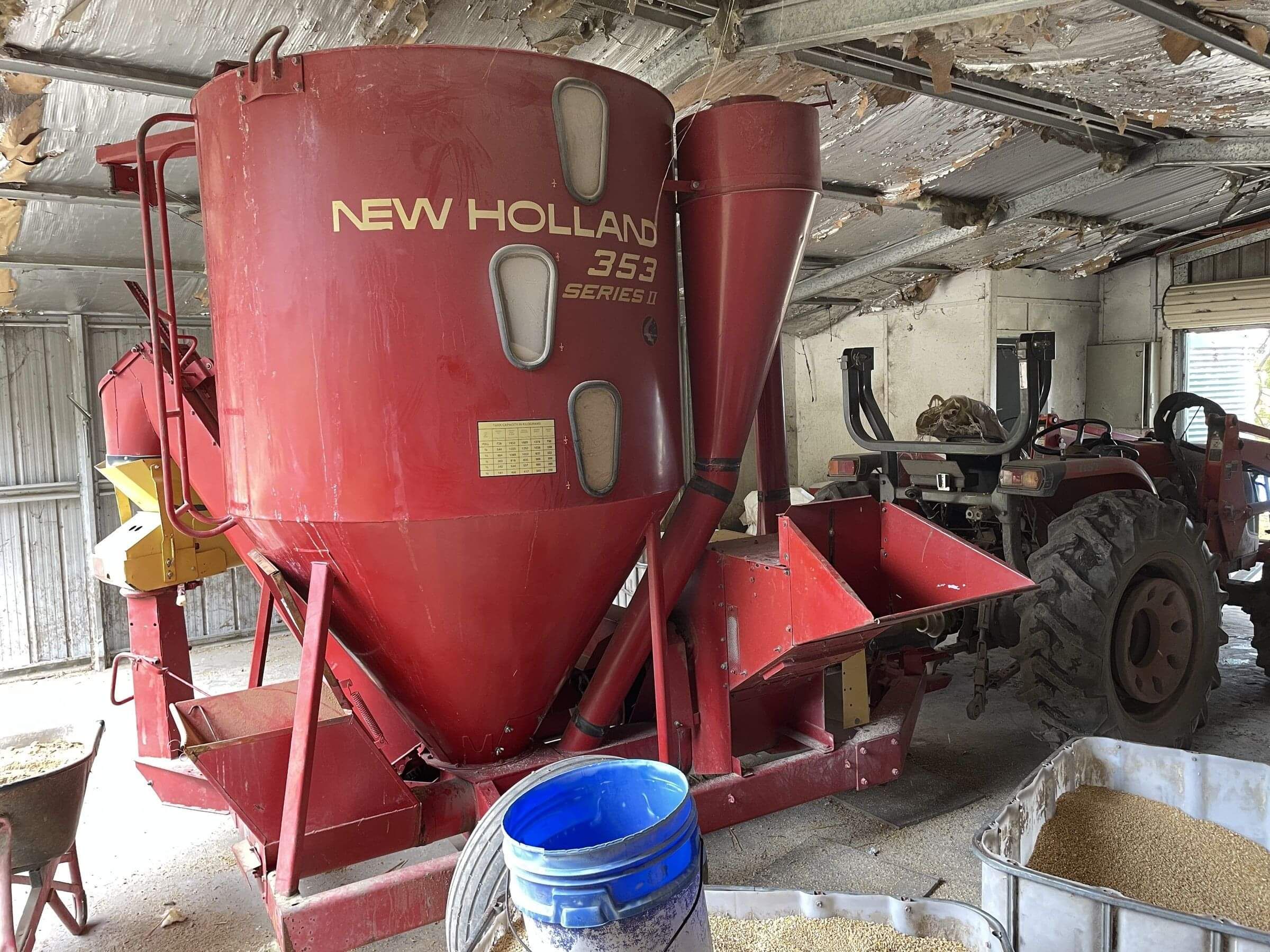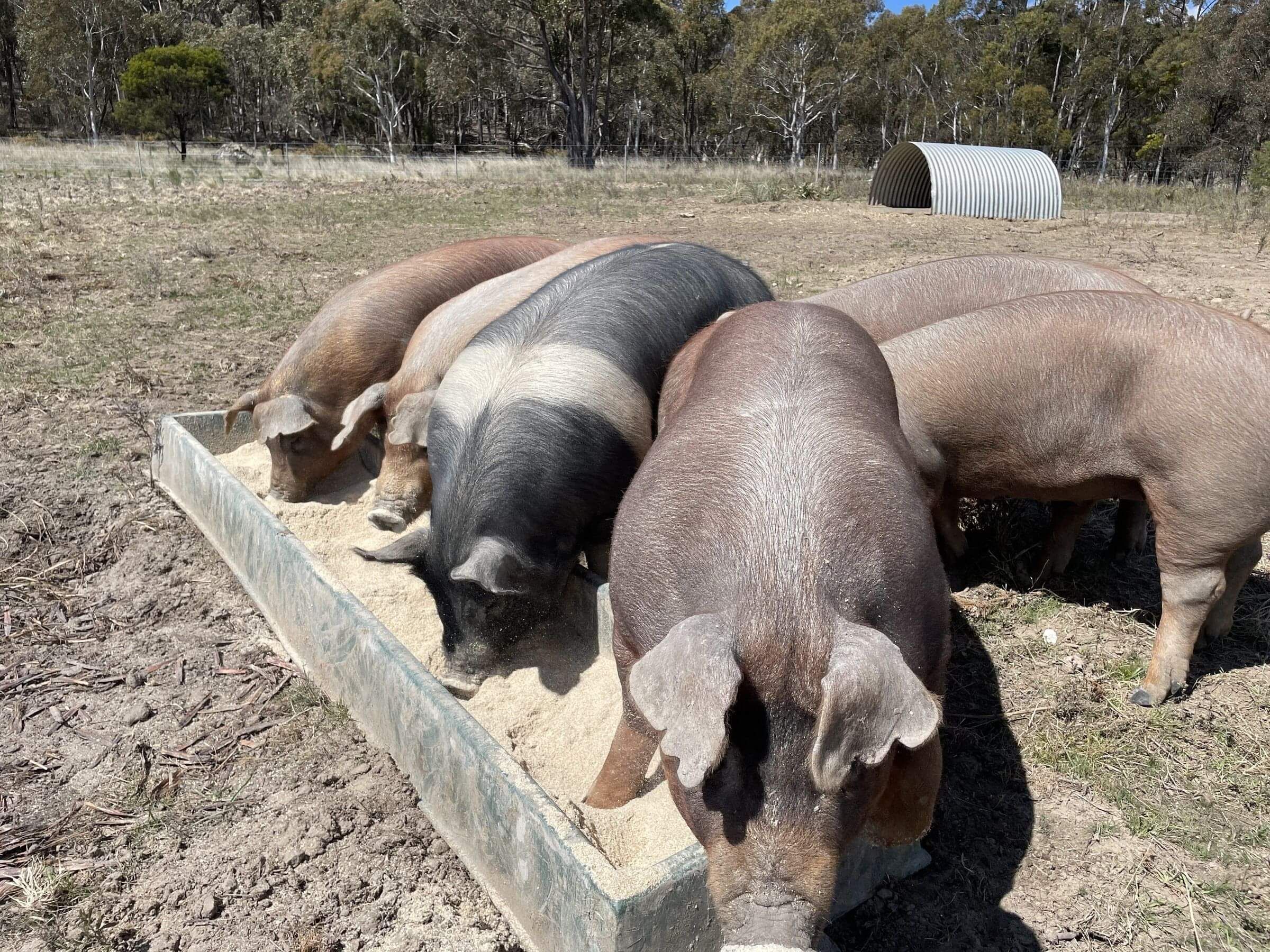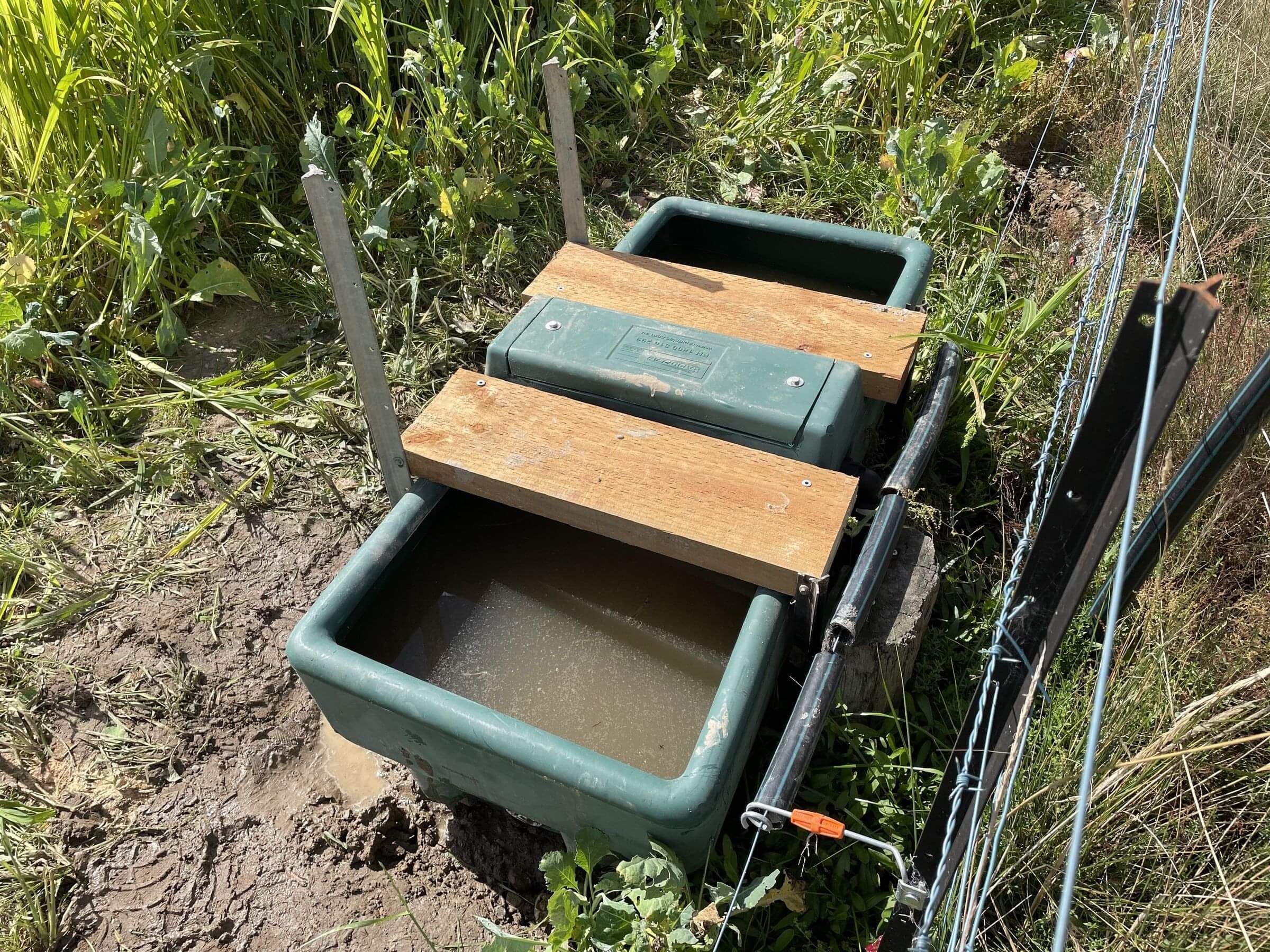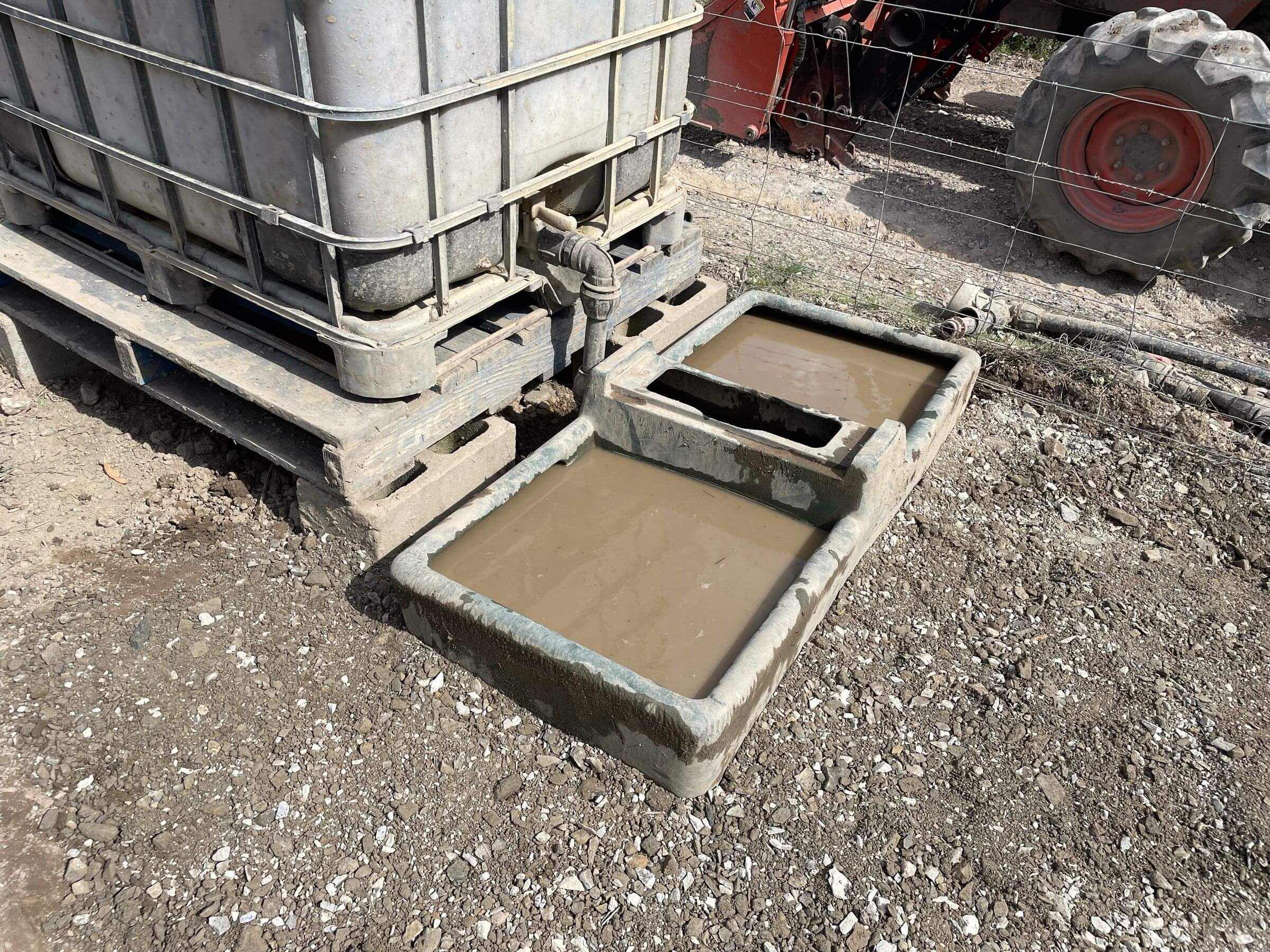Introduction
Recently we’ve had a lot of clients that are new to keeping pigs, and if this is you then this page contains some basic information relating to the husbandry, feeding and housing of pigs.
There are no hard and fast rules when it comes to raising pigs, different farms and different settings will require different approaches but this page contains general information that should be considered the minimum requirements needed.
It is important that you have all of these basic requirements covered and ready before you get your first pigs, as there is nothing worse than trying to get everything done last minute after problems have already presented themselves.
Housing
Regardless of your climate or location, outdoor pigs will need adequate housing. Even if it’s a simple dome hut bedded with straw on the ground, they will need to have access to something that will shelter them from sun, wind, cold and rain. These can be moveable or fixed, however with fixed housing it is advisable to have a concreted or other solid flooring to prevent pooling of water and erosion around the structure.
This applies to all classes of pigs, with special attention for farrowing sows and newly weaned pigs. Also keep in mind that when purchasing your initial breeding stock they may have come from a system different to how you intend to keep them and this is something you need to discuss with the breeder.
Farrowing sows indoors is a good option to have, especially in cold, wet weather. We make extensive use of deep bedded farrowing pens (see right) which have been a huge success.
Feeding
Contrary to popular belief, pigs cannot simply be fed on scraps or waste feeds. It is irresponsible to do so, and can also be illegal if it is deemed to be swill feeding.
The best option for someone keeping pigs for the first time is to simply feed a commercial pelleted pig feed. You can mix your own feed rations but keep in mind pigs cannot digest whole grains, and rations will need proper nutrients, minerals, vitamins, amino acids and proteins. This can be formulated properly with the help of a qualified animal nutritionist.
If pigs are kept free range, they will eat pasture, crops and other forage they have access to but this does not mean they will not need to be fed. Pigs are a monogastric animal meaning that they cannot digest and extract nutrients from large amounts of forage that are high in fibre (grasses,crops,ect) All pigs require daily feeding, with weaner and grower pigs requiring constant access to feed.
The following is a guide and what works for us, although generally this will apply to the majority of systems using modern, fast growing pigs with good genetics. We mix all our own feed on farm and tailor a specific feed for each class of pig. For smaller systems this is not necessary, a grower ration will be suitable for all classes of pig but keep in mind this will increase costs.
Grains must be crushed finely in a hammermill to be digestible, ideally to around 700-900 micron in size. Any additives are added to this and thoroughly mixed through.
Grower pigs - ad lib feed from weaning until market (20 weeks). This should be a 18% protein 13MJ energy grower ration as a minimum. Avoid any low energy, bulky feeds as this will only fill them up and slow their growth down.
Piglets: They should have access to a highly palatable, highly digestible and high protein creep feed from 10 days old until weaning. This is important as it will make transition at weaning much easier and promote good gut health, which reduces scours.
Weaners: As we wean at 8 weeks we go strait from creep feeding to a grower ration. If you are using a different system and weaning at 4-6 weeks you will need a specially formulated weaner diet. This will be highly palatable, high in energy and high in protein (19-21% protein, 14MJ energy).
Sows: Dry sows need only one feeding of around 2.5kg/day. Sow rations should be a minimum of 14 % protein and 12.8MJ of energy. If they need more weight on them this can be increased to 3.5kg/day.
Lactating sows need to be started on around 2kg the day after farrowing, and increased over a few days to about 7-8kg/day. Lactating sows need a high energy, high protein diet in order to produce sufficient milk (14MJ energy 20% protein).
Boars: One of the main reasons for keeping boars seperate is feeding as they will get too fat. They only need around 2.5kg/day and just feed to condition. Overly fat boars will have difficulty working and are prone to leg problems.
Gilts: Breeding gilts will need special consideration, as they need to have enough condition to not only continue growing themselves and their litter, but also to produce enough milk and have enough weight that they will not be under weight at weaning. Generally we have our gilts ad-lib until their first mating at around 28-30 weeks of age. At this stage they should be around 150 - 160kg meaning they’re at around 230 - 250kg at farrowing.







Water
It is very important that your pigs have access to cool, clean water at all times. Pigs drink a lot of water, especially in hot weather. Water needs to be supplied in such a way that they cannot destroy it, this means having large, dug in troughs if out in a paddock or properly designed water bowls/ nipples if indoors or if the water is connected to their shelter.
Keep in mind that pigs will get into their water trough if they will fit in warm weather, so a wallow will need to be provided if kept outdoors to help them cool down. Misters are good for pigs kept indoors or where a concreted shelter area is provided.
Fencing
Something to keep in mind before you get any pigs is do you have adequate fencing to keep them in?
Pigs kept outdoors will need well constructed stock fencing to keep them contained, preferably with a combination of tightly strained ring lock with offset electric.
Boars, sows, gilts and weaner/grower pigs will all need to be kept seperate. This is because they all have different feeding requirements and simply mixing different ages and classes of pigs is very poor practice and will result in disaster.
Boars should be kept seperate from sows after mating, and it is preferable to have a dedicated mating area where sows can be mated separately before being returned to their own paddock/pens. Pigs have strict dominance hierarchies amongst sows and to avoid injury to gilts they should never be kept together with mature sows.
Farrowing sows will also need to be kept seperate unless batch farrowing, and if batch farrowing in paddocks all sows will need their own shelter.


Husbandry and Vaccinations
As well as basic husbandry skills required for moving and handling pigs, you will also need adequate yarding/loading facilities to get pigs onto and off the property, and also to use when vaccinating/treating sows and boars, weaning piglets ect.
You should also consult a suitable veterinarian to organise a vaccine schedule for your herd; this will be very important and is critical to the overall health and management of your pigs. Different areas and setups will have a different schedule, as every farm is different. Below is the vaccine schedule that we use, again this is what works for our system but something similar is what will be needed for most outdoor based systems.
Breeding gilts and boars:
PLE Vac and Respisure 1 at 22-24 weeks,
PLE booster at 26-30 weeks
If farrowing indoors, gilts will require an Eco-Vac vaccine for E-Coli at 6 weeks and 3 weeks prior to mating.
Sows:
Ivermectin or Dectomax injection 1-2 weeks prior to farrowing. Respisure 1 vaccine and Eco Vac booster 1-2 weeks prior to mating
PLE booster and booster at weaning prior to re-mating.
Boars:
PLE, respisure 1 and dectomax/ivermectin every 6 months.
Piglets:
Iron (if indoors) and respisure 1 at 3-5 days old when ear notched.
Grower pigs:
These should not need additional vaccines if going to slaughter, if you are having problems with worms/parasites ect they can be given a ivermectin/dectomax injection at 12 weeks (4 weeks after weaning). In wet seasons they will generally need it but your worm burden should be very low overall with worming the sows prior to weaning, this breaks the cycle.
All photographs contained on this site are copyright and may not be used without permission elsewhere or reproduced/distributed by any means.
All the information contained within this site are the intellectual property of the author, and are based on our results and findings.
As such individual experiences in practice may vary and we are not responsible for the use/misuse of this information and will not be held liable for any financial loss or investment made as a result.
